Every Pinball Machine of 1995, Ranked

Picture this. It's 1995. On a whim, you and your buddies decide to go see a movie at the local theater. Batman Forever or Die Hard with a Vengeance? You'll figure it out when you get there. As you pull into the parking lot, with “Gangster's Paradise” booming from the speakers, you notice the arcade next to the movie theater has a few new pinball machines. Once inside, it's impossible to pull yourself from the lineup of pins. You spend $20 worth of quarters, and hours fly by as you chase high scores with your friends. You end up missing the movie altogether. Life is great.
It's no secret that pinball (and arcades in general) thrived in the 1990s, but 1995 was an exceptional year for releases. Out of the 20 or so titles that hit arcade floors that year, there are numerous all-time greats, many of which are still beloved to this day. Unfortunately, there were just as many all-time stinkers in the bunch. From the bottom of the barrel to potential GOAT machines, the pinball class of 1995 is remarkable for many reasons. To celebrate their collective 30th anniversary, I'm putting forth my definitive ranked list for your consideration. Agree or disagree, it's safe to say that these games have formed lasting memories, for better or worse.
Note: Novelty machines like Gottlieb's Strikes 'n Spares and a few prototype/foreign machines have not been included.
The Pinball Class of 1995 from Worst to Best
19. Mario Andretti (Gottlieb)
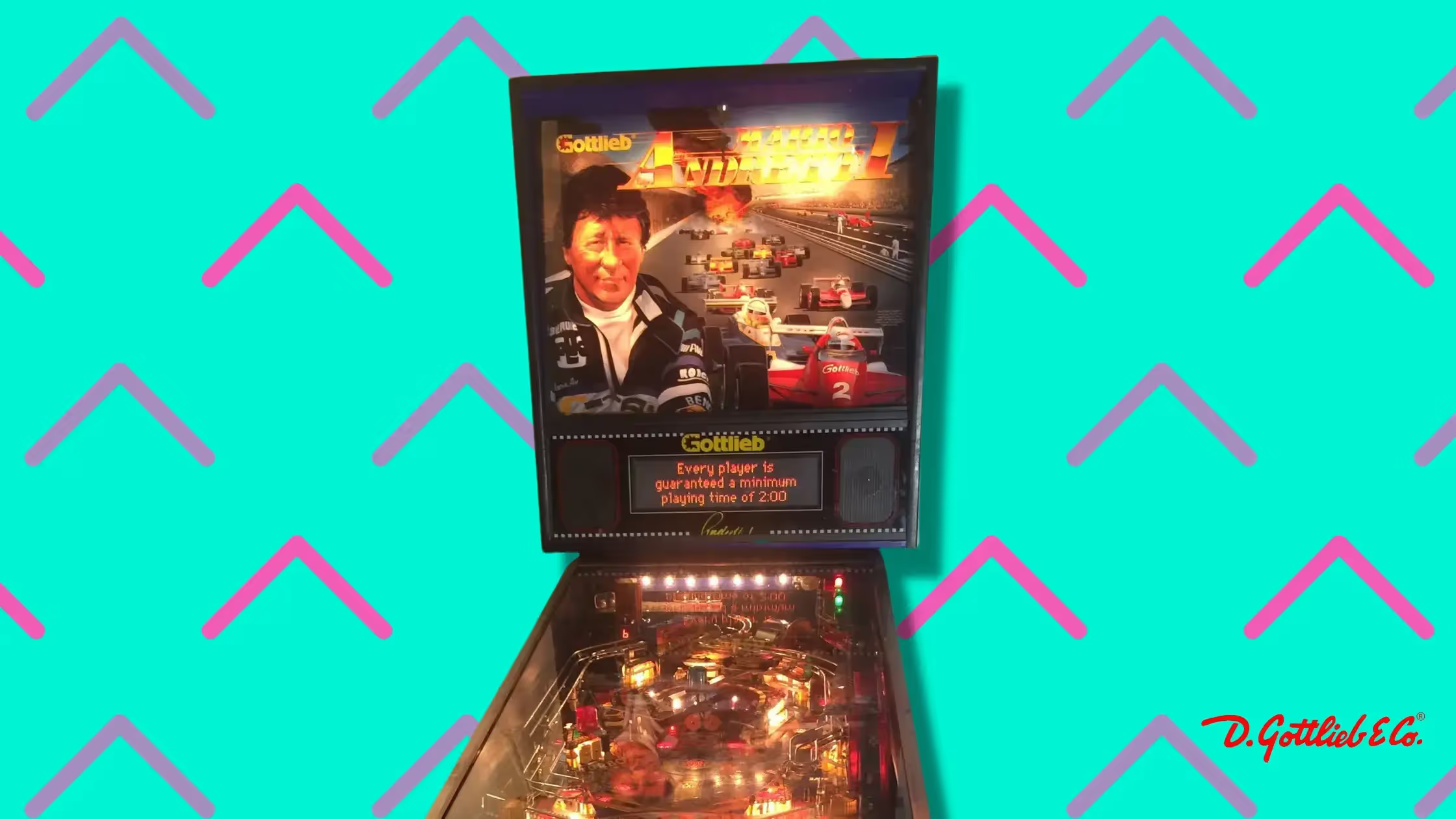
There's something about racing themes that I particularly enjoy in pinball, but in the case of Mario Andretti, that's not quite enough to push it up from the bottom of this list. Based on the career of the eponymous Formula One driver, this pin suffers from a drain-happy design and clunky shots. The second-to-last game designed by Jon Norris during his stint at Gottlieb, Mario Andretti can definitely rev the engine, but lacks the satisfying gameplay to bring it over the finish line.
The backglass and playfield art don't do much to woo you into the experience, and once you start flipping, it's easy to see why this pin doesn't get more love. The majority of the playfield is occupied by two car toys that spin in a circle, protecting a treacherous yet valuable U-turn shot at the very center. While the focal toy adds a nice sense of speed to the experience, it also rejects countless shots and makes the shooting experience feel like random luck. When the toy isn't spinning, you're left with a lackluster playfield that's simply not fun to shoot around. It's not offensively bad, it's just kinda boring, leaving it in last place when compared to the rest of 1995's offerings.
18. Waterworld (Gottlieb)
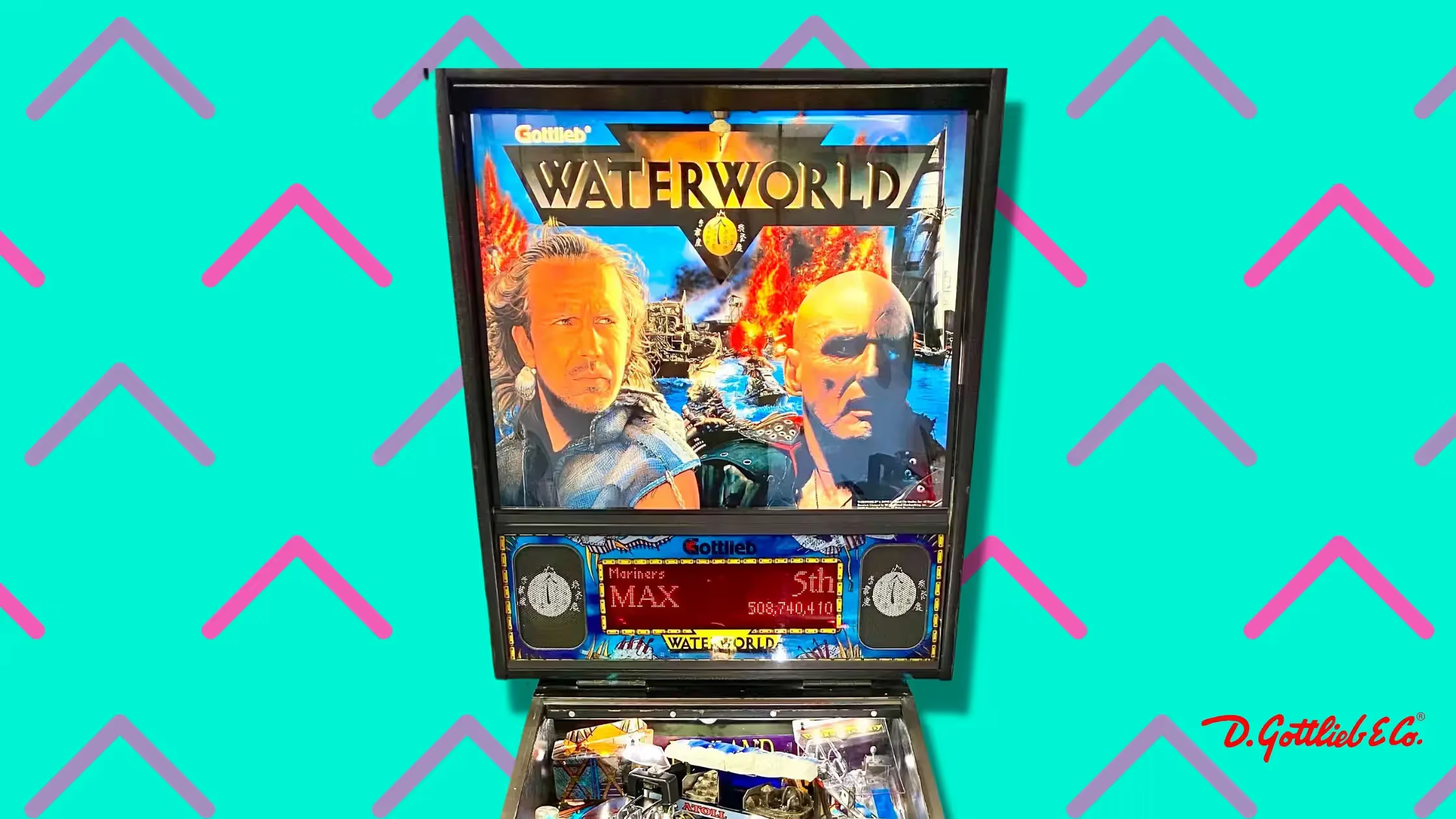
Waterworld is the first of many pinball machines on this list that was based on a big-budget movie, and unfortunately, this pin is about as good as the movie. That's to say, it's glaringly mediocre, despite the flashy toys and admittedly interesting concept. Designed by Jon Norris and Ray Tanzer, this is a game that looks pretty neat on first glance, but grows old after just a few minutes of flipping.
The star of the show is the shifting boat toy at the top of the playfield, which you will likely shoot at constantly, due to the lack of other interesting shots. Apart from ripping a few orbits or nailing the scoop over and over, Waterworld lacks flow, made worse by those spongy Gottlieb flippers. The backglass and playfield art also leave a lot to be desired, and are equal parts cluttered and hard on the eyes. I wouldn't call it a bad game, but it's far from the first I'd select on location.
17. Shaq Attaq (Gottlieb)
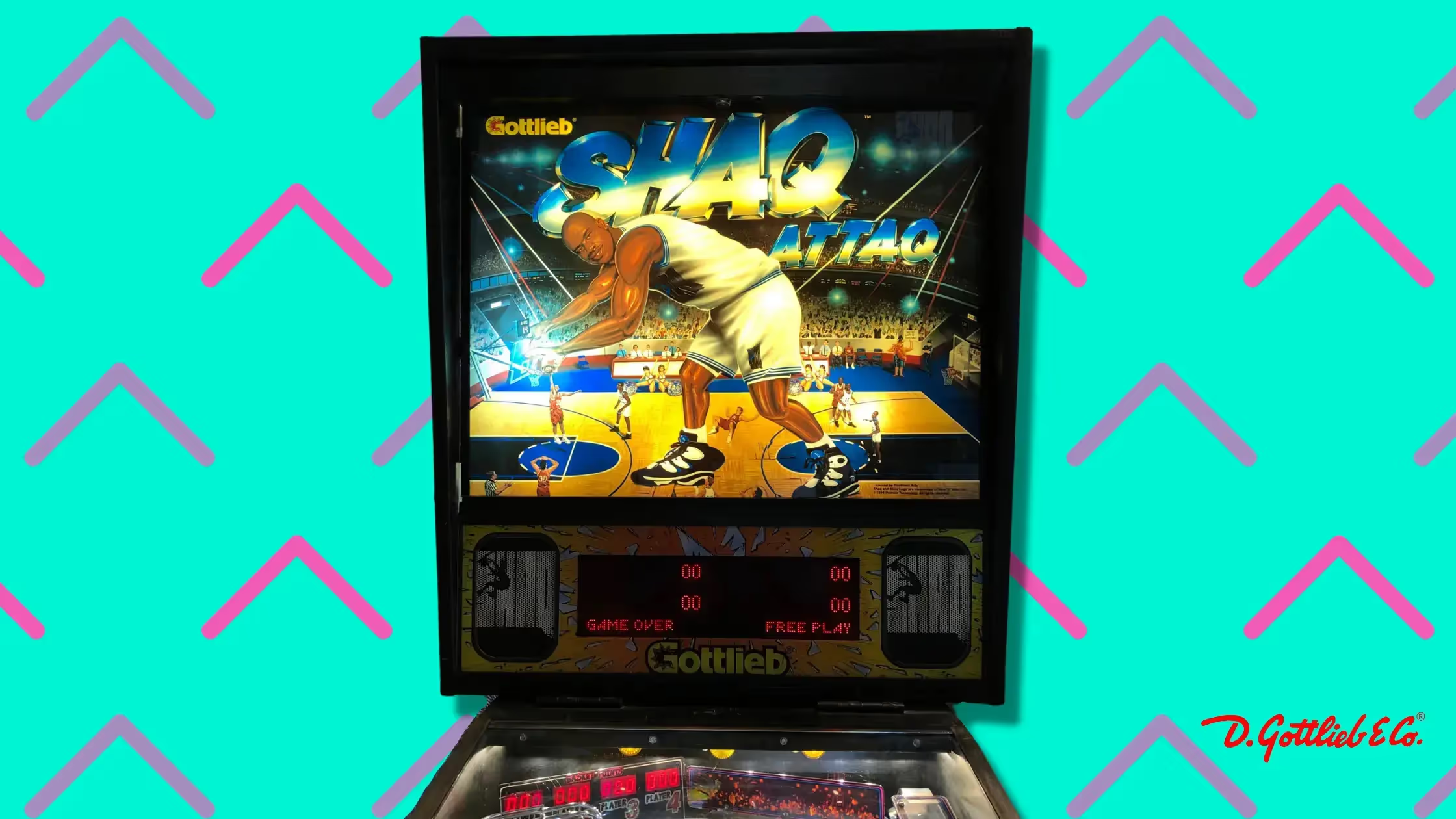
Another one of Gottlieb's infamous pins, Shaq Attaq takes the towering 7-foot-tall basketball star and shoves him into a machine for our amusement. With a massive cartoon-style depiction of Shaquille O'Neal extending from the flippers all the way up to the center ramp, it's nigh impossible to lose yourself in the game without a constant reminder of Shaq's impressive stature.
Thankfully, the code is somewhat deep, if you have the patience to learn its quirks, but Shaq Attaq is a game that sees the most play from new, casual players. For that purpose, it's a lighthearted and fun machine, as shooting at the basketball hoop for a few minutes is pretty entertaining. An extremely annoying announcer and goofy art (poor Shaq) make the experience more grating than need be, but it's a small price to pay for the opportunity to dunk like the big man himself.
16. Big Hurt (Gottlieb)
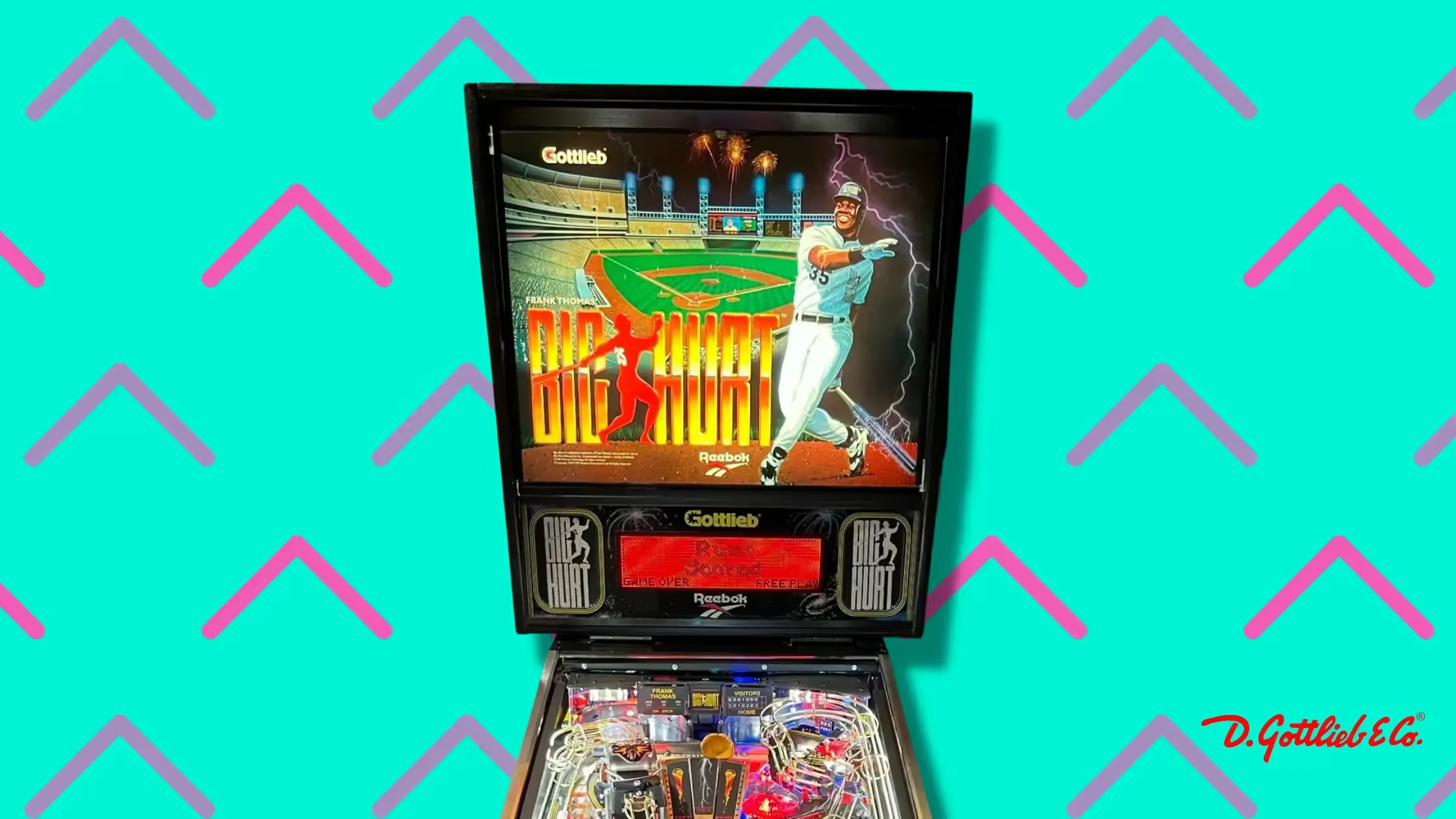
In the world of baseball-themed pinball machines, Big Hurt sits toward the top of the list, but this pin still slumps toward the bottom when compared to the rest of 1995's releases. This game puts you in the proverbial shoes of Frank “The Big Hurt” Thomas, the five-time MLB All-Star and storied Chicago White Sox player, famous for his innate ability to send balls flying. Similar to Gottlieb's other efforts of the time, Big Hurt is a bit clunky, but easy-to-make shots and some fun mechs elevate the experience.
While you can spend plenty of time scoring home runs and taking potshots with the upper flipper, Big Hurt's main draw is the center ramp, which is partially blocked by a moving catcher's glove. Fun in theory but frustrating in practice, the glove is the best and worst part of the pin. Successfully pass it, and you're rewarded with points and dopamine. Hit it dead-on or catch the side, and you're likely to earn a straight-down-the-middle drain. The playfield art and game audio are decent when compared to its peers, but not worth writing home about. Overall, this is one of the better Gottliebs of the era, but still lacks the intrigue to draw quarters from your pocket.
15. Apollo 13 (Sega)

A pinball machine about a failed moon landing sounds like an odd combination, and you'd be right. Based on the movie adaptation of the same name, Apollo 13 was a leap for Sega, but there's still some fun to salvage here. Fun mechs, a few satisfying shots, and a particularly gimmicky multiball help Apollo 13 stand out from the pack.
I'm a stark enjoyer of space-themed stuff, but despite some decent playfield art and the obvious cosmic influence, that's not what I like about Apollo 13. Instead, there are a handful of mechs that stand out and keep the game worth playing. Most notably, the rocket shot on the left side of the playfield feels great to stick, and the 13-ball multiball is the stuff of legend. Unfortunately, scuffed game audio and lackluster modes and code make the experience shallow. At the very least, it's worth playing a few times to trigger that ridiculous multiball, where the only appropriate strategy is to flip with reckless abandon.
14. Stargate (Gottlieb)
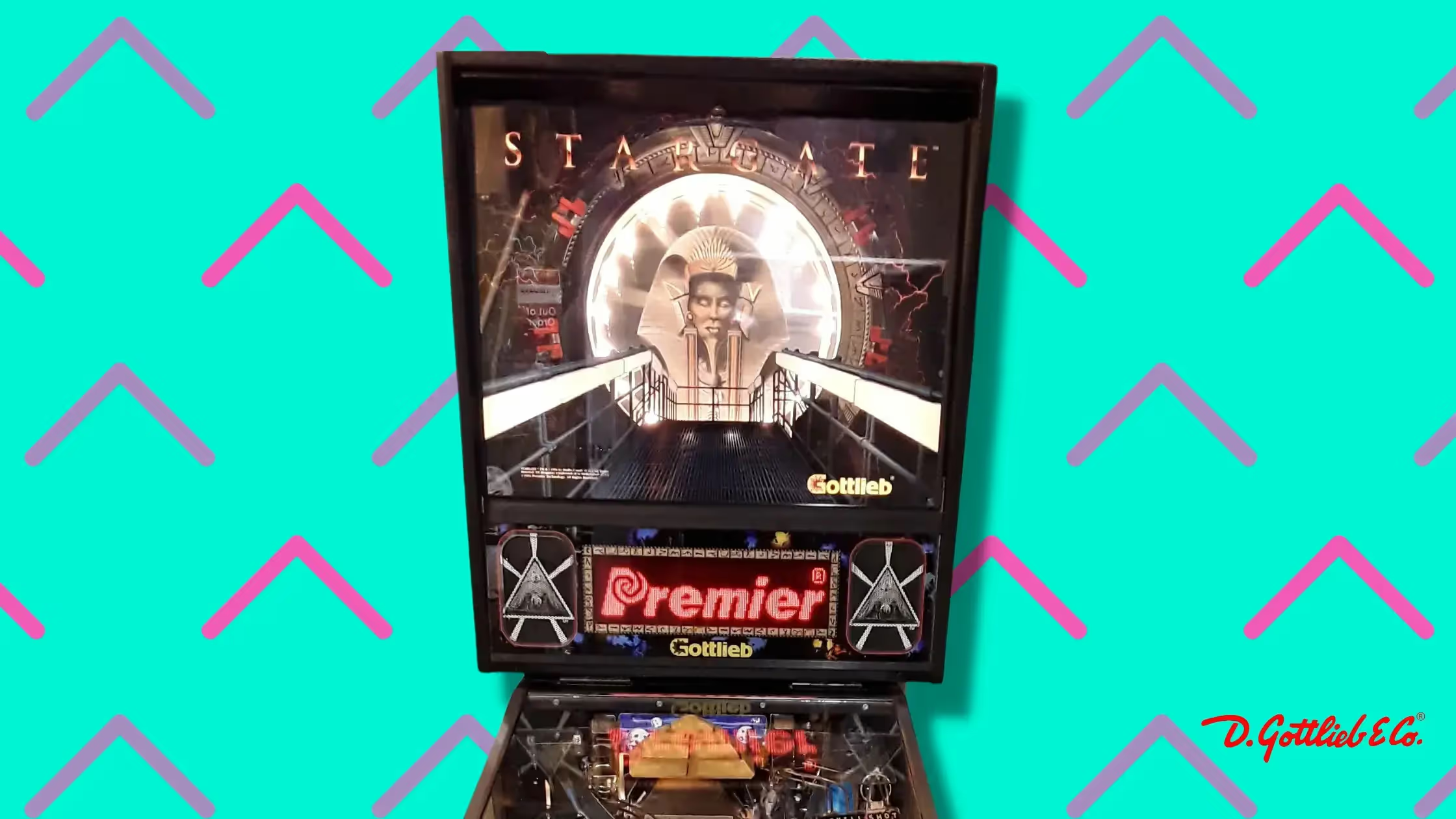
Stargate is a weird pinball machine, which makes sense, as it's based on the equally wild sci-fi film directed by Roland Emmerich. However, like the movie, it's interesting enough to get you in the gate, but a bit dull overall. This is mostly due to the playfield design, which is unique and features lots of cool mechs, but feels at odds with itself and lacks flow.
Most of your time spent playing Stargate involves blasting up the center of the playfield, in a bid to “shoot the pyramid!”, something that the game never stops demanding. This is how you start modes, but the shot is so tight that you'll often rattle out. Speaking of tough shots, you'll need all the strength you can muster to hit the ultra-steep left ramp, but even clean shots will often fail due to shoddy Gottlieb flippers. It's a shame, because Stargate is really cool to look at. The backglass alone is a work of art and possibly the best Gottlieb ever put out. It's that aesthetic prowess that gains Stargate so many points here, and it would likely score higher if the gameplay weren't so clunky and frustrating.
13. Batman Forever (Sega)
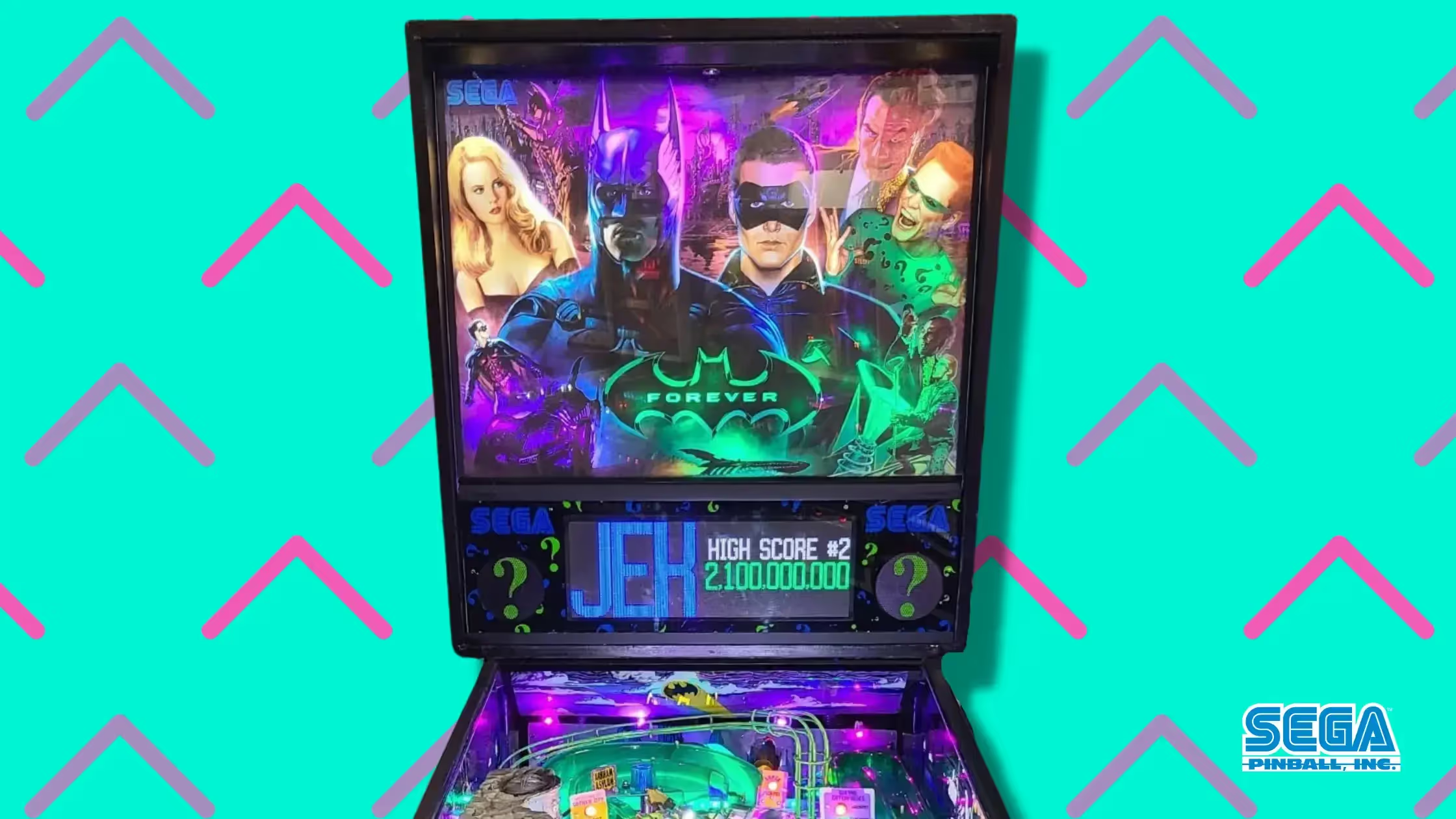
To be honest, I've only played Batman Forever a few times (and for the first time pretty recently), but something about it spoke to me. As a fan of the movie, I was more than thrilled for my first plunge, and I'm happy to say the flips were fun for a while. Though somewhat clunky, as Sega machines have a tendency to be, the vivid playfield art, excellent Jim Carrey callouts, and abundance of toys were enough to win me over.
Designed by Joe Kaminkow, Batman Forever is a beast of a game, with wireforms, sculpts, and mechs aplenty. With its wide-body form, there's a lot of space to use, and this game doesn't sacrifice an inch. The shots are tight, but when hit clean, result in some wild ball paths that keep you engaged. The rules are a bit shallow and the gameplay can feel stilted and repetitive at points, but when it comes to spectacle, Batman Forever is a winner. As brash and vivid as the movie but more palatable for hours on end, this is an evocative pin that uses the source material well.
12. Mary Shelley's Frankenstein (Sega)
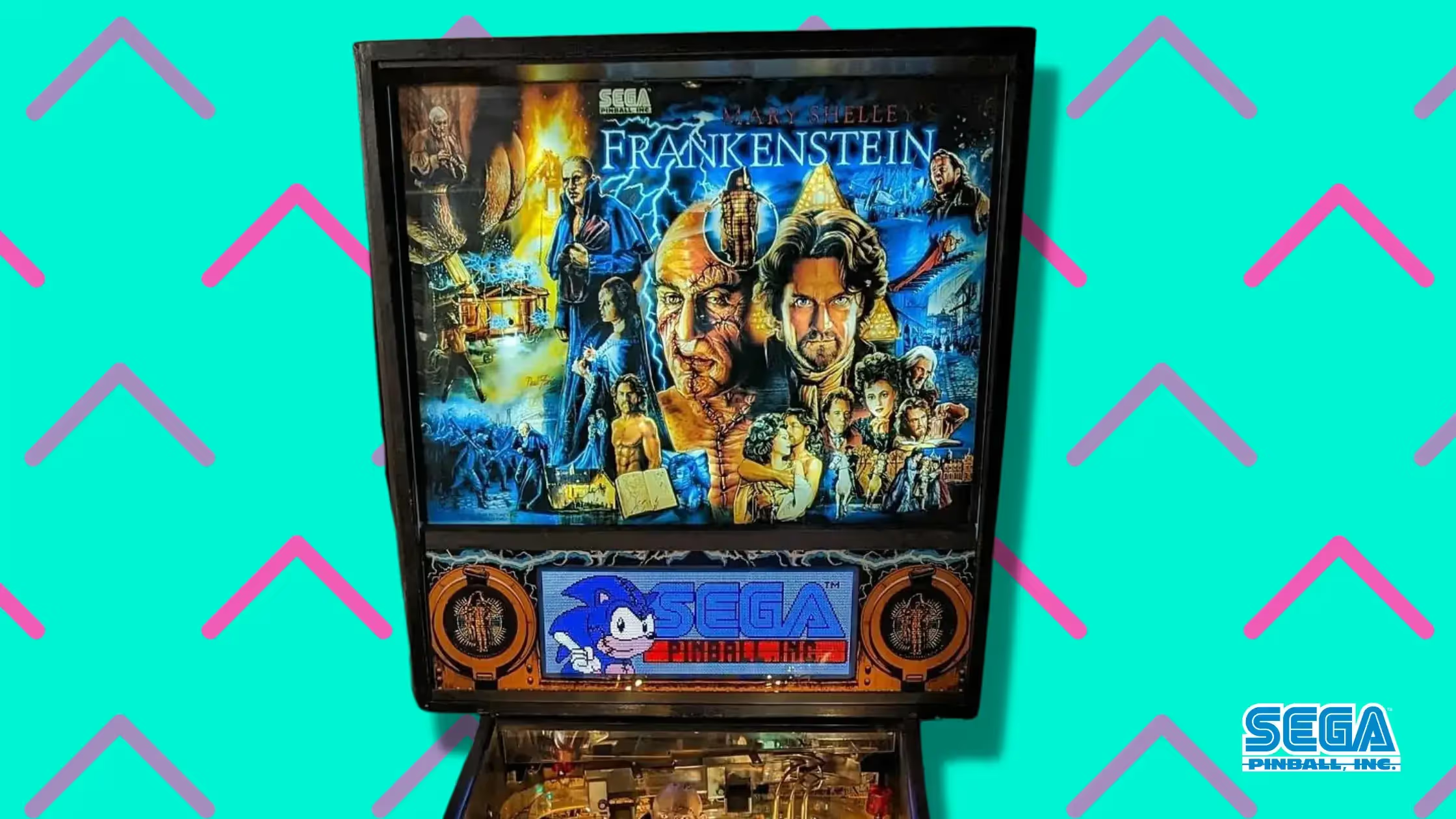
Proof that movie pins were just as prevalent in the 1990s, Mary Shelley's Frankenstein is based on the Kenneth Branagh film, and does a pretty admirable job of translating the film to flipper. One of John Borg's more eclectic designs, the pin features deep but easy-to-understand rules, and the risk/reward makes chasing scores lots of fun.
Right from the skill shot, which has you pulling an electric switch to raise the dead, Mary Shelley's Frankenstein grabs your attention. Although the Frankenstein toy looks goofy, it's a great centerpiece for the action, and adds a dash of whimsy to the otherwise so-so art package. When multiball is activated, Frankenstein chucks the balls at the flippers, making for a great moment that's sure to evoke a laugh. The shots are right-side dominant, with the right ramp acting as a tricky but satisfying return shot, guarded by stand up targets to dissuade inaccurate spamming. Perhaps it's my history of playing this pin in a competitive setting, but whenever I step up to the flippers of a Mary Shelley's Frankenstein, the resulting game is usually exciting enough to beckon more than one play.
11. WHO dunnit (Bally)
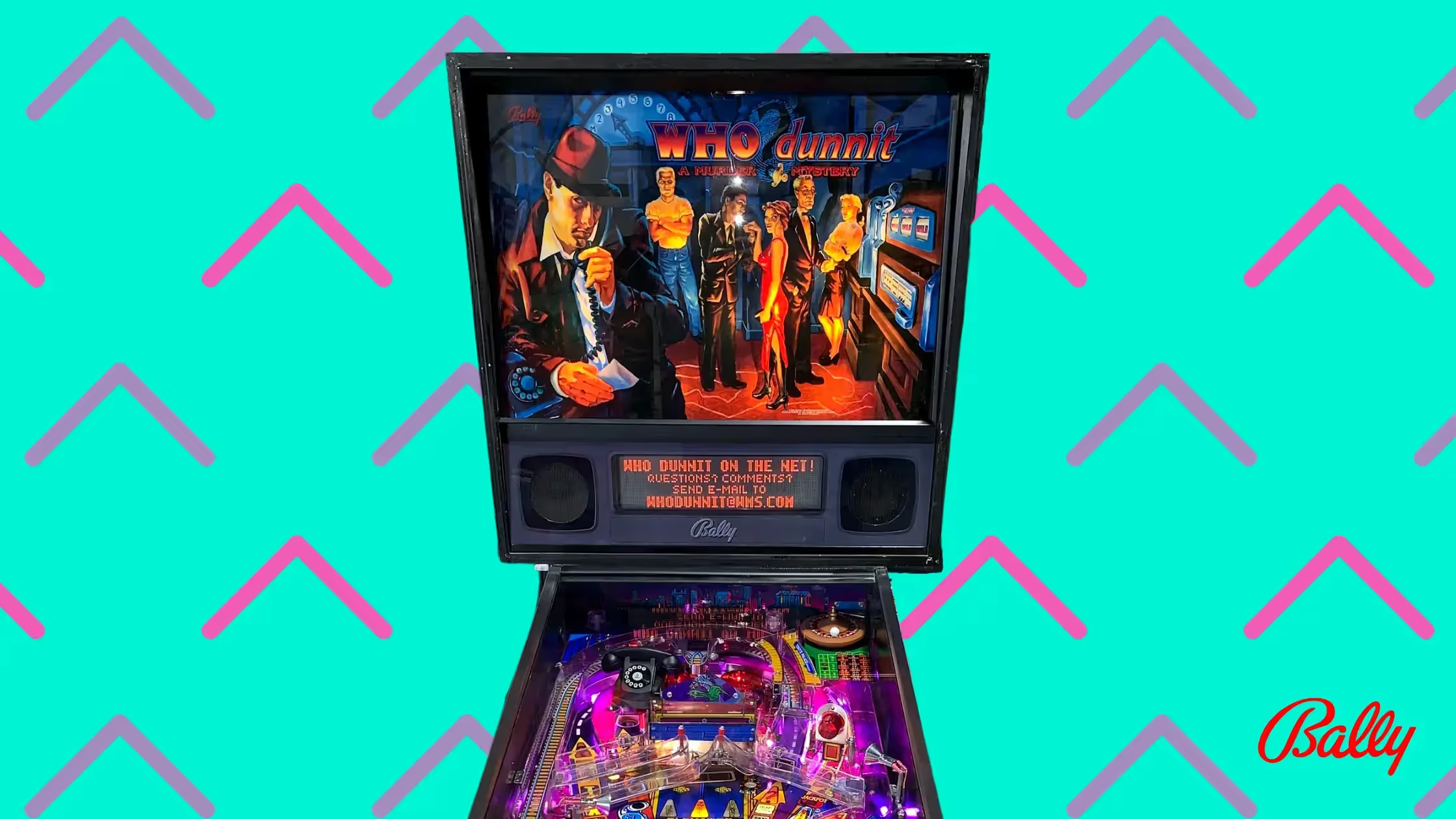
Although it's the lowest-ranked Bally game on this list, WHO dunnit is still a damn fine machine in my book. A Dwight Sullivan game through and through, it's one of the few pinball machines that nails its mystery theming, making you feel like a true noir-style detective at the flippers. Easy to shoot, and with a rule set that can quickly be mastered, it's a good game for pinball newbies and an enjoyable romp for veterans all the same.
When it comes to the playfield layout, WHO dunnit won't win any awards for being unique, but that's not really an issue. Apart from the center ramp, which splits off into three directions, most of the other shots are normal pinball fare. Still, as you settle in for your first murder case, collecting clues and interrogating suspects, it's hard not to become immersed. It plays like the board game CLUE, but with a casino-inspired flair, injecting an extra dash of personality into the mix. After you've played it a dozen times, the game does become a bit repetitive and the lack of a final wizard mode is a sore spot, but Who Dunnit excels with its atmosphere and storytelling through the medium of pinball.
10. No Fear: Dangerous Sports (Williams)
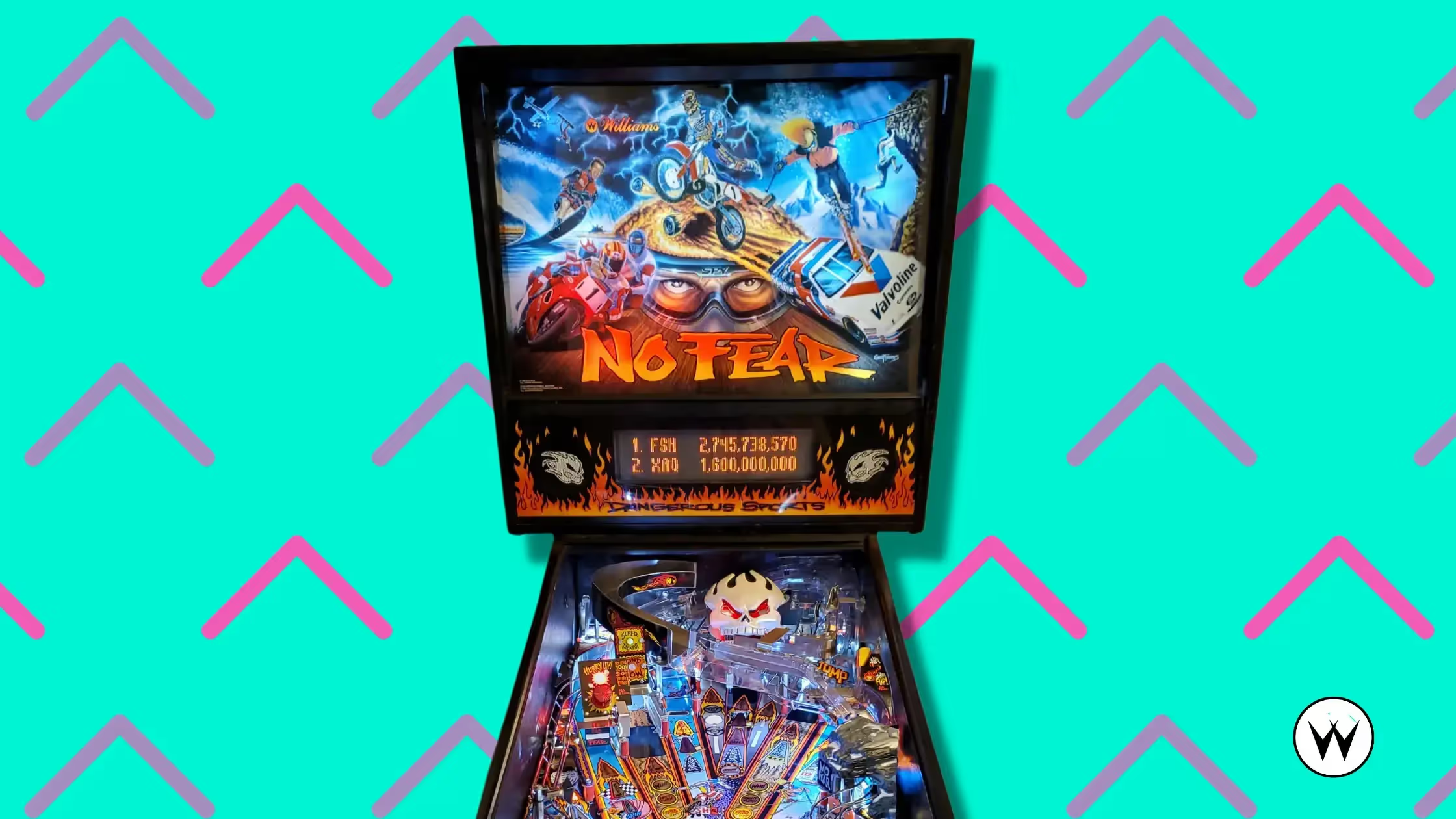
No Fear: Dangerous Sports has everything you’d want in a Steve Ritchie-designed machine: unmistakable flow, repeatable shots for big points, and a sense of attitude. Probably the only pinball machine to ever be based on a clothing line of all things, No Fear: Dangerous Sports does right by its theme, showcasing all sorts of death-defying sports for an X-Games style experience. Even if you're not really into that kind of thing, it's hard to deny how fun a shooter this game can be.
One of the best parts of No Fear is its bite-sized challenges, covering everything from off-road racing to downhill skiing and skydiving. Completing five of these challenges opens up one of the “Major” challenges, each offering hectic multiball fun. Assuming you can get past some of the cheesier elements of its unapologetic '90s vibe, there's lots of fun to be had with casual play. However, when you start chasing super high scores, things become exceptionally repetitive. While not quite good enough to earn the unofficial title of “High Speed III” that many others like to give it, No Fear is absolutely a lightning-quick game that can manufacture surplus dopamine as you rip shots and survive the ridiculous speed.
9. Dirty Harry (Williams)
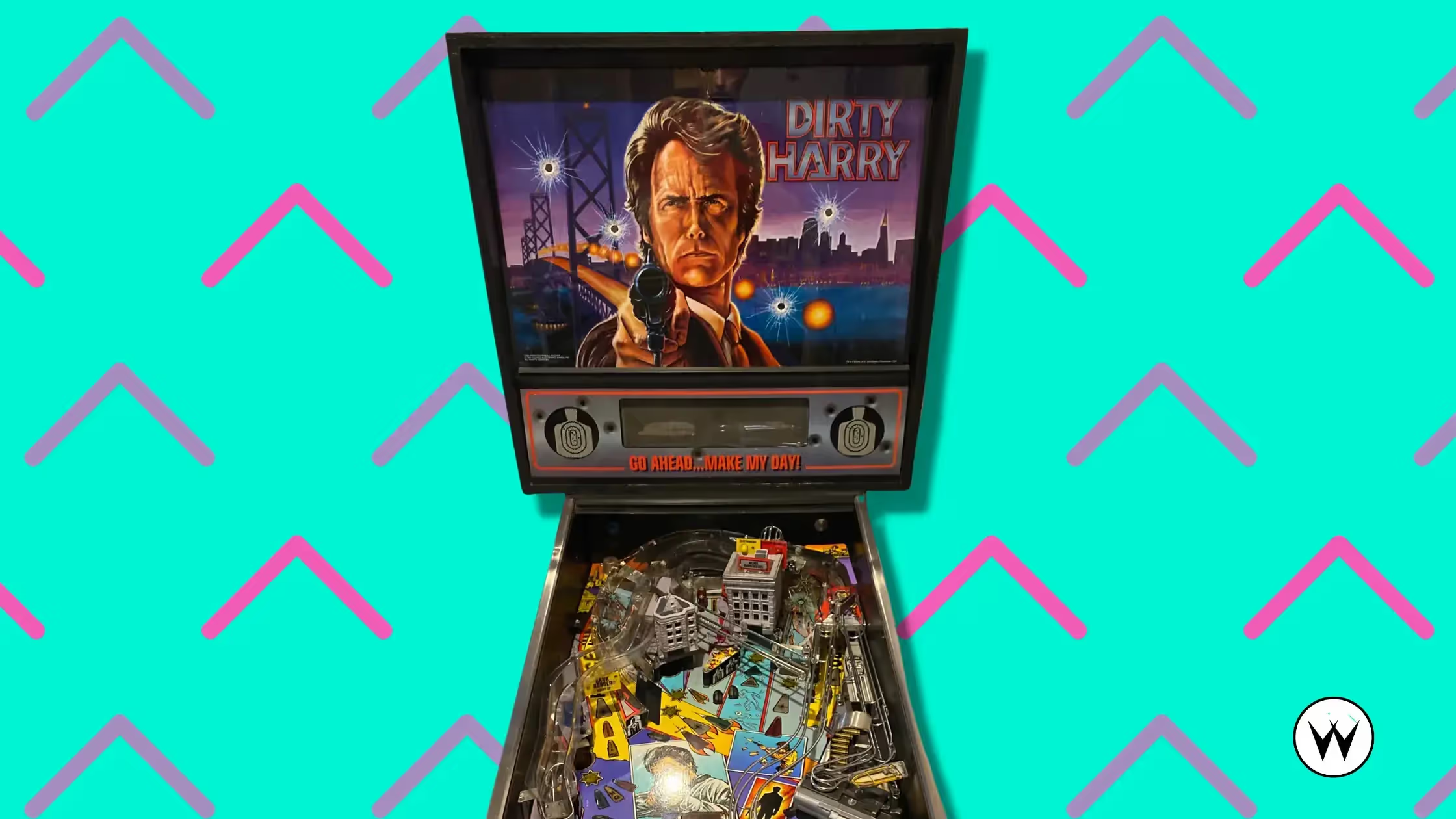
When it comes to movie themes, Dirty Harry was a bit of an odd choice for Williams in 1995: the original film was first released in 1971 and the fifth and final film was nearly a decade old at that point. The art is a bit cheesy, the rules straightforward, and the call-outs exceptionally mediocre. It's an open secret that Williams wanted to go with their sound-alike voice actor, but were forced to include Clint Eastwood's custom speech lines, delivered in a dull, less-than-interested manner. But to me, none of this really matters.
When I first played Dirty Harry, I was unimpressed, but as the years go on, it has become a guilty pleasure of sorts. Forced to learn it through tournament play, there are some sneaky scoring tricks within the otherwise basic rules and a few cheeky flipper tricks that feel great to pull off. Ripping a clean shot through the left orbit and holding the upper flipper to sneakily divert the ball into the scoop makes you feel big-brained, and using the gun launcher toy never really gets old. It's also fun to progress through the linear “shotgun shell” modes, beating up criminals and the like, despite the limited number of shots on the playfield. Compared to some of the other pinball machines on this list, Dirty Harry lacks depth in rules and shot variety, but there's a weird charm within the simplicity that I cannot ignore.
8. Pinball Magic (Capcom)

1995 marked the first year that Capcom entered the fray as a pinball manufacturer, and despite only releasing a handful of machines, most of them were quite good. Pinball Magic sits atop the Capcom pile, bringing forth a classic theme complemented by colorful art, cool toys, and rewarding rules. Due to the rarity of the machine, I've only ever flipped on it a few times, but I've come away impressed.
As you might assume from the name of the game, magic tricks are the focus here, and Pinball Magic has you feeling like a sorcerer as you pop around the playfield. Though there's not much in the way of modes and the multiball is pretty standard, it's fun to chase small tasks, building up your scoring potential along the way. Generally speaking, apart from quirky upper playfield and a giant, wand-waving hand, there's not a ton about Pinball Magic that feels truly unique. Still, the art, sound, code, and shots all come together to create an experience that's fully realized and fun. Edging out a lot of the fodder and comfortably sitting in the top ten, Pinball Magic was a solid first release from Capcom.
7. Baywatch (Sega)
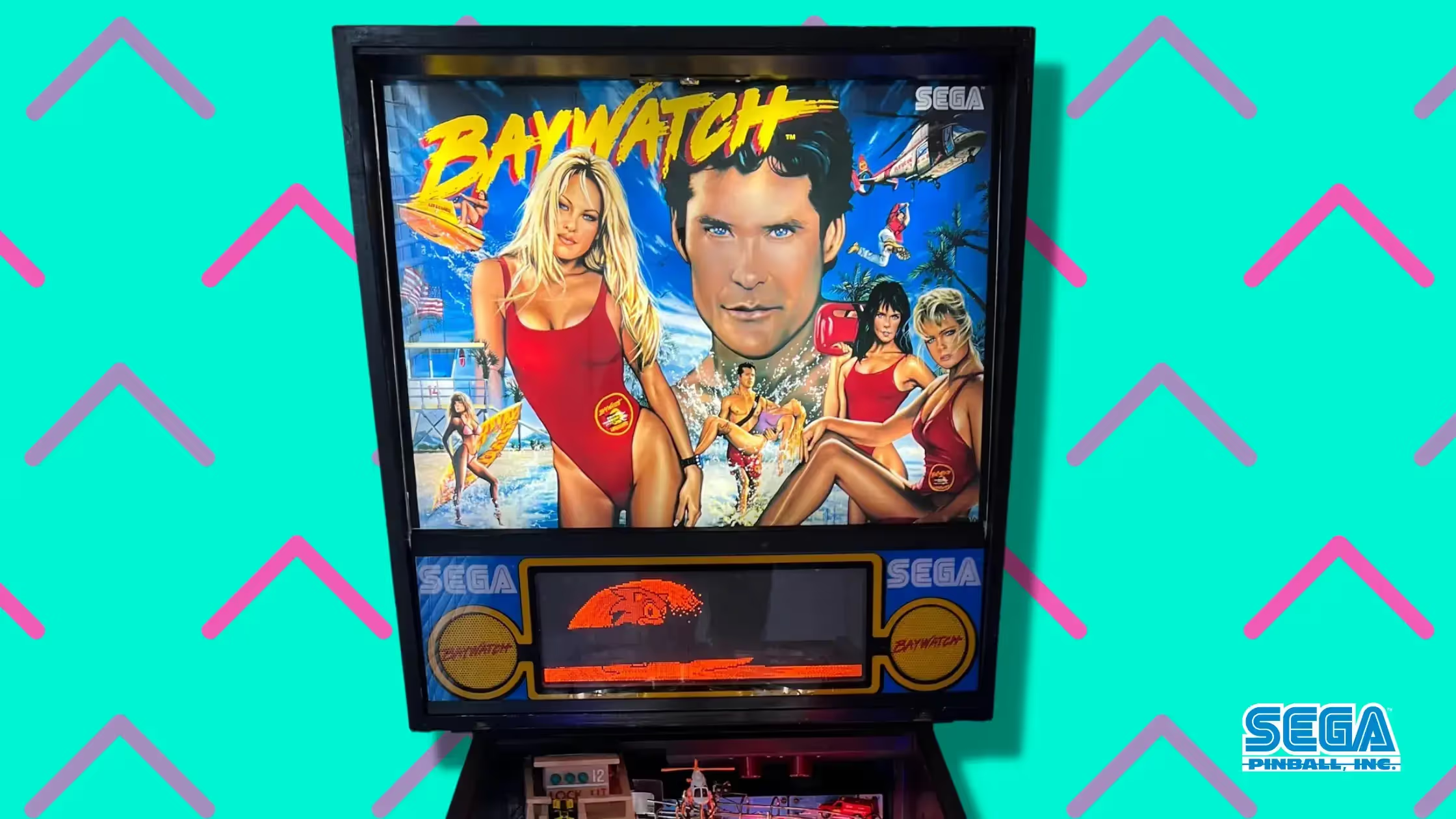
Judging from the sleazy art, it'd be easy to assume that Baywatch was simply low-hanging fruit that played into a male-dominant demographic, but that's only partially true. Unlike most other machines with lowkey embarrassing themes, there's actually deep and rewarding gameplay underneath its salacious appearance. In fact, this is easily one of my favorite Sega games, competing alongside 1997's Starship Troopers and 1998's Godzilla. I might be in the minority here, but I kind of like Baywatch's beach-themed vibes and screen animations, which are made even better with a color DMD.
However, like Dirty Harry, the art package is not what draws me to this game. The playfield has an excellent variety in shots and a few neat features, including some easy ramps, a sneaky straight up the middle shot, an Addams Family-style mini-flipper leading to risky “shark” targets, and an upper flipper for good measure. The rules are familiar, with each major shot having a mode, and the multiball is easy enough to start if you’re proficient with backhanding the guard tower ramp. It's quite fun in tournaments but even better when you're trying to reach the wizard modes in casual play, all while David Hasselhoff watches on from the backglass, relentlessly hitting you with the “blue steel” look.
6. Johnny Mnemonic (Williams)
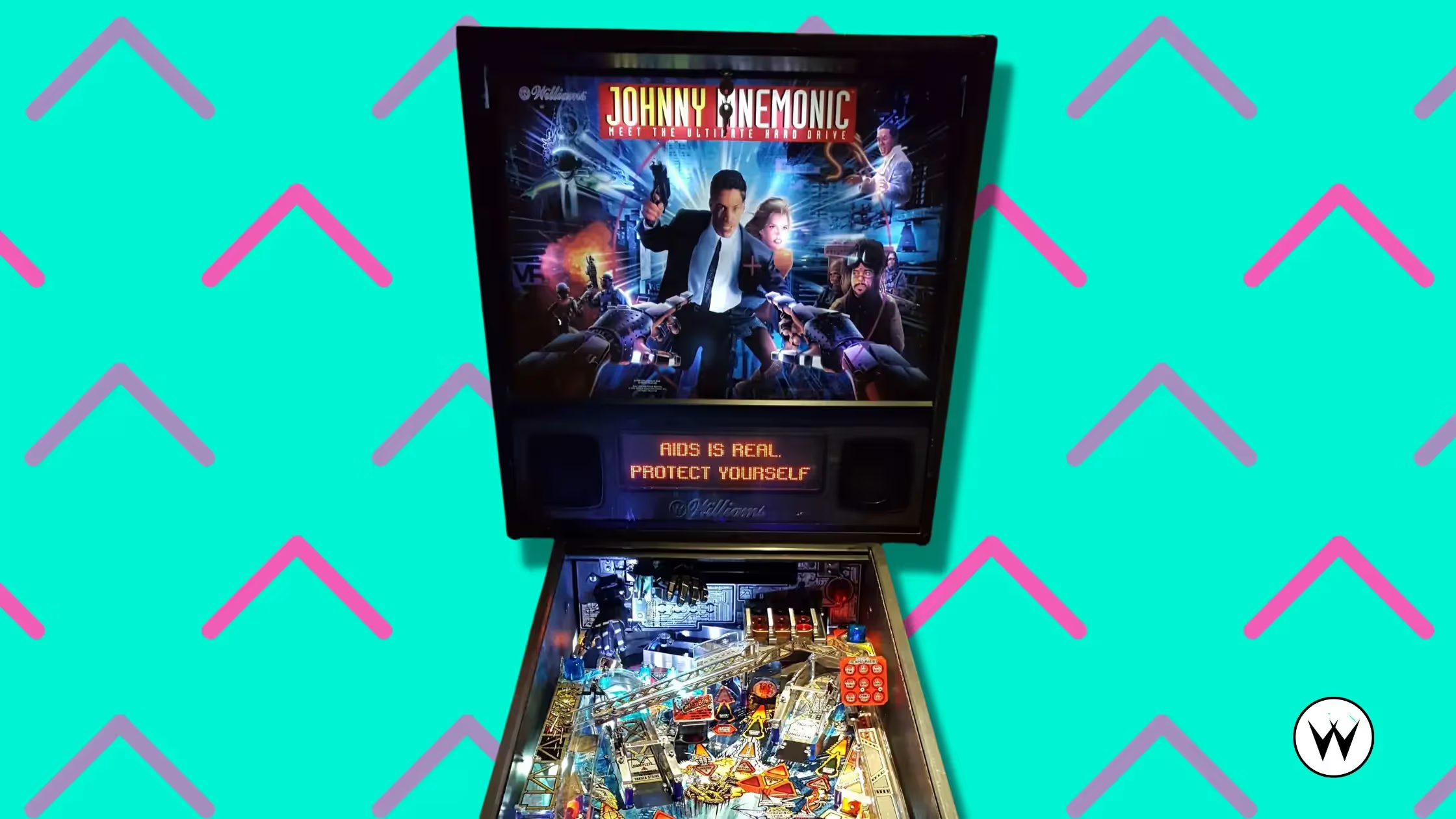
Judging from the previous entries on this list (and one ahead), you should now start to see the pattern of 1995 pinball machines being based around sub-par movies. Such is the case with Johnny Mnemonic, a futuristic, cyberpunky, sci-fi themed game based on the Keanu Reeves movie of the same year. So campy and weird that some consider it satire, the Johnny Mnemonic movie failed to impress critics or fans, but it made for a seriously cool pin. Even if it's a bit clunky, particularly in regard to the focal glove mech and corresponding grid, the fast pace and high scoring potential make this one a winner.
Johnny Mnemonic has a soft spot in my heart, not because I'm a fan of the film, but due to countless hours of playing it at the Pincinnati pinball convention both casually and competitively. It has become a bit of a tradition to lock in for a few games of Johnny at the con, ripping the spinner and comboing ramps for big points in Yakuza Strike. This is also a game where bonus points can be HUGE, and since I'm a player who has a tendency to tilt, this adds a bit more risk to every nudge. When it comes to the glove, which is supposed to pick up the ball and drop it on the grid for specific rewards, I like it in concept but the mech is always broken or disabled on every copy I play. However, the video mode makes up for that, as each passing “SNARF” further enriches my soul. A few points get docked due to annoying scoring exploits, which can force you into specific strategies during competition, but I don't hold that against it much. Overall, Johnny Mnemonic is a fast-playing pin with some eye-catching art, best experienced with a juiced up spinner and a love for Keanu's '90s antics.
5. Congo (Williams)
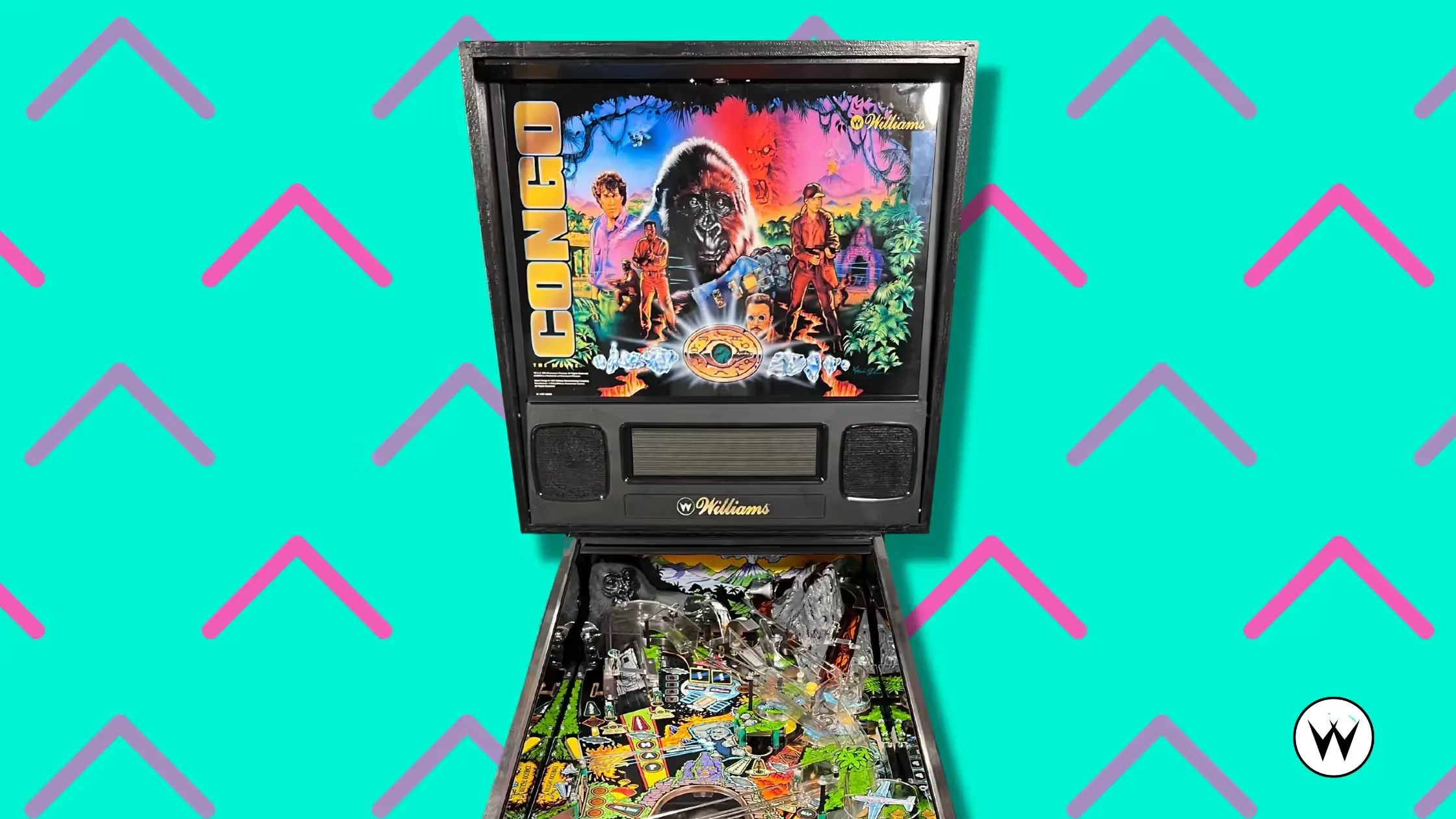
Though not completely uncommon in the pinball world, Congo is a perfect example of a machine that's of far better quality than the movie it's based on. Whereas the film was an unabashedly cheesy romp that tried to cash in on the success of Jurassic Park, the pinball machine feels unique and exciting, with some excellent flow and rules that give you plenty of things to focus on. Outfitted with vibrant jungle art featuring a ruined temple and a gorilla getting shot with a laser beam, it's also got a great aesthetic, its influence clearly seen in modern pins like King Kong: Myth of Terror Island (Stern, 2025).
The nuance to Congo starts before your first flip, as this is one of those games where you can get away with not validating the playfield, offering extra skillshot attempts to those who are brave enough to let the ball intentionally drain. With the ball on a flipper, you can start grinding out map awards, reveling in the “HIPPOS!” callout, and slowly rack up diamonds on your way to the wizard mode. The real fun begins when you spell “GRAY” by hitting the corresponding lane, which spits your ball into the lower playfield. Here, instead of flippers, you're granted control of a gorilla with big 'ol bashing fists, letting you frantically smack the ball around like a true primate. These gameplay elements, combined with the rich atmosphere and visual design, make for a palpable feeling of adventure. Less common than most Williams games of the era, Congo is a real treat, so definitely give it a whirl if you find it on location or at a pinball convention.
4. Indianapolis 500 (Bally)
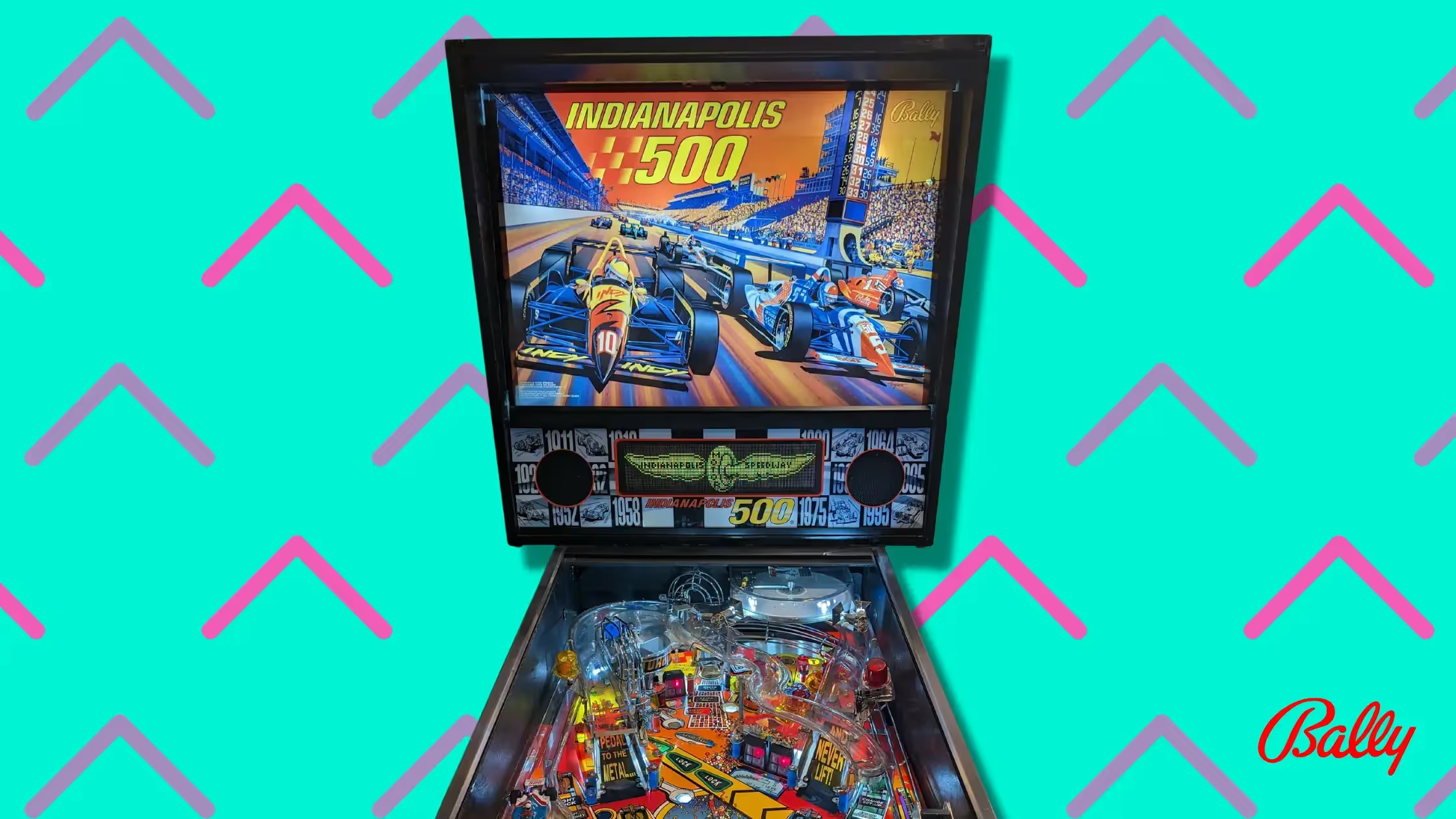
Another Bally banger, Indianapolis 500 is a game where speed is inherent and fast reactions are a necessity. This perfectly aligns with the game's theme, which replicates the rubber-burning madness of the eponymous Indianapolis 500 race, which has been running strong since 1911. I've said it before and I'll say it again: there's some alluring aspect of racing-themed pins that always seems to grab my attention, and Indianapolis 500 sets a high bar in that sub-genre. Next to Whitewater (1993) and Elvira's House of Horrors (2019), it might just be Dennis Nordman's best game. As much as I appreciate the aesthetically pleasing playfield art, with its emphasis on complementary primary colors, it's the playfield layout that really speaks to me.
Remarkably fast at almost every point, Indianapolis 500 is one of those games that has you gripping the side rails, nervously awaiting faster-than-light feeds. It also features one of the most satisfying ball locks in all of pinball, requiring a precise shot from the upper flipper, which hopefully sends the ball flying right into the snug lock saucer. During the game, you are rooted on with play-by-play callouts from real-life racing commentators, which adds a nice sense of realism and energy. Indianapolis 500 also contains some classic pinball humor scattered throughout, with chuckle-worthy DMD animations, most specifically in the “Wrong Turn” mode. Speaking of modes, the only major fault of Indianapolis 500 is the utter lack of a worthwhile wizard mode. Still, activating 3X playfield, starting multiball, and ripping jackpots for ridiculous points kind of makes up for it. Excellent in both competition and casual play, Indianapolis 500 is one of the most underrated releases of 1995, its entertainment value growing with each passing plunge.
3. Jack*Bot (Williams)
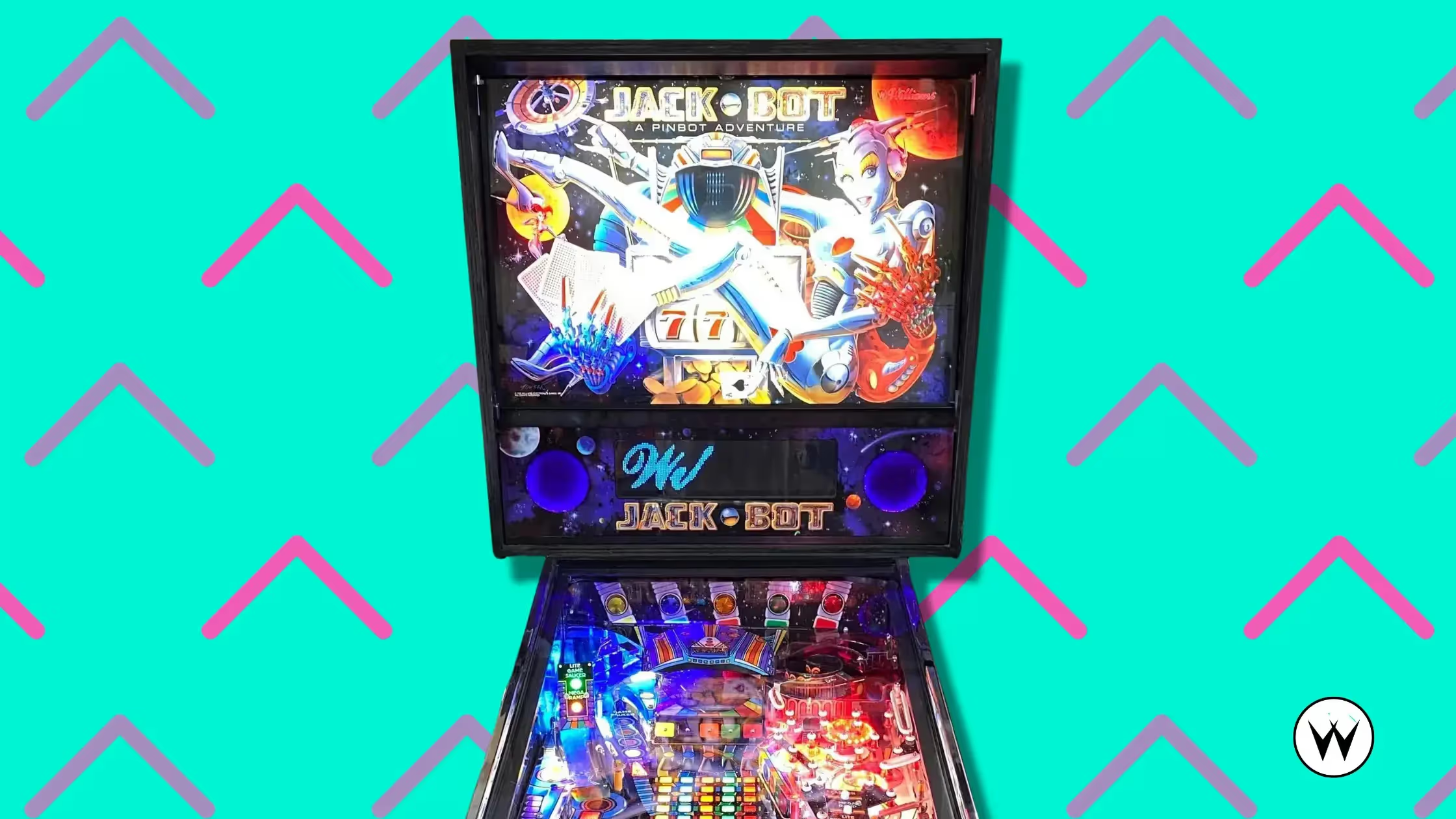
Have you ever played Pin-Bot (Williams, 1986) and thought to yourself, “This game needs more gambling”? Then Jack*Bot is the game for you. A fresh take on a classic, long before Chicago Gaming Company and Stern were pumping out remakes and remasters, Jack*Bot lifts Pin-Bot's playfield and updates the code for more modern scoring sensibilities. Similar to Pin-Bot, you're mostly aiming to open the center visor for multiball while picking up other points around the field, making the game a balance of accuracy and survival. You don't have to pull off cool combos or snipe tough shots to score big points; sometimes a bit of luck will take you all the way.
That's part of what makes Jack*Bot so engaging time and time again. While the rules are simplistic, with no traditional modes and challenges, there's an excellent risk/reward mechanic permeating the experience. This is most apparent in the added casino feature, which sees you gambling for points in four distinct games of chance, though you can “cheat” a bit by slamming on the extra ball button. Afterward, you can choose to cash in your points or press your luck, going double-or-nothing with one clean shot under the left ramp. Especially in competition, knowing when to commit to multiball or take a chance at the casino is a big part of the strategy, but there's always that pesky element of randomness to take into account. Jack*Bot is best when it's fast and kind of hectic, making your next flip feel like a roll of the dice. It might not be the best game in the Pin-Bot trilogy, but Jack*Bot is definitely one of the best pinball machines of 1995.
2. Theatre of Magic (Bally)
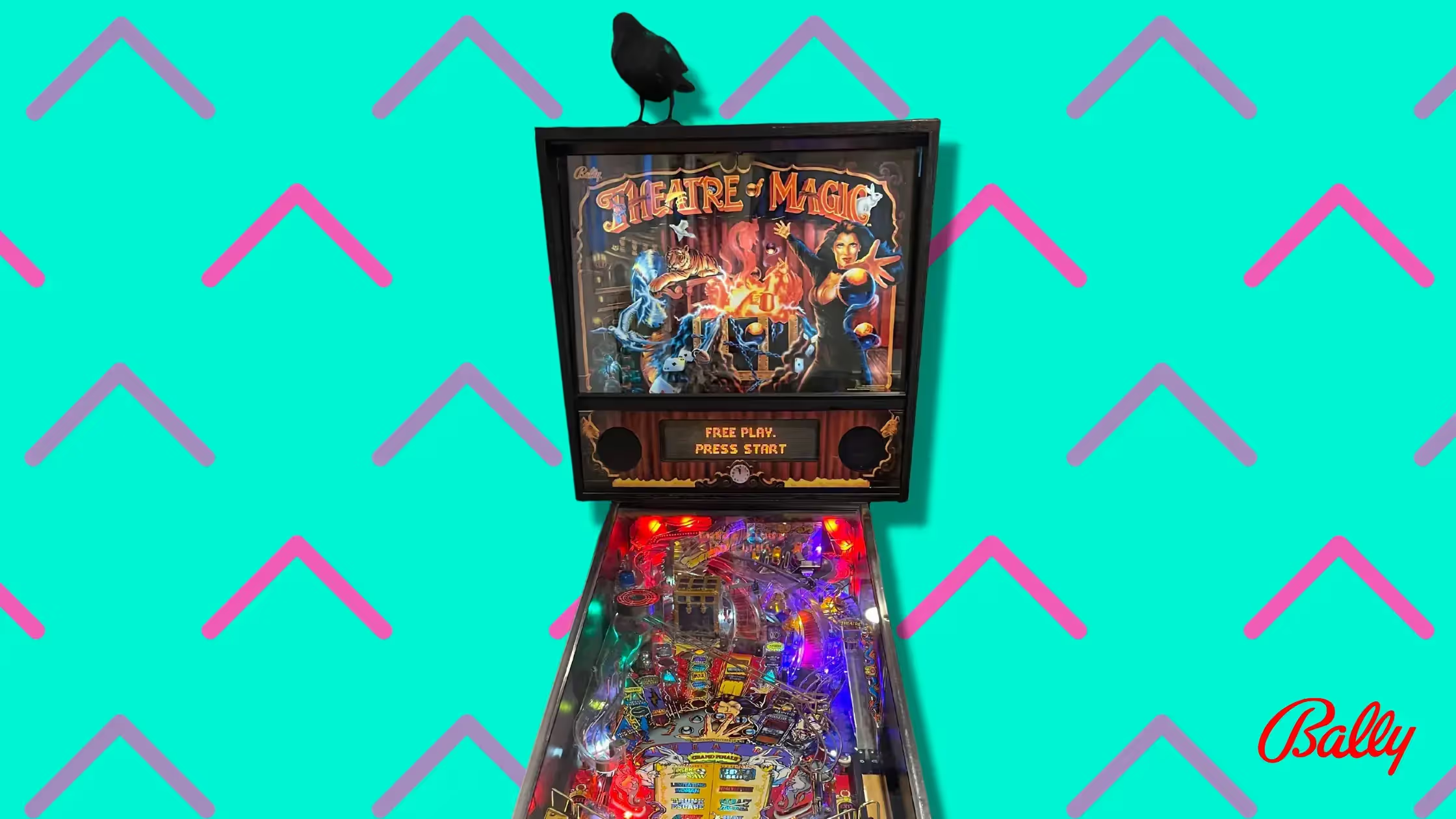
A masterpiece in theme integration, Theatre of Magic throws you headfirst into a world of illusion and mystery, packed with toys, fun shots, and a constant air of excitement. Designed by John Popadiuk, almost every element of the playfield evokes the game's stylish showmanship. From the hidden scoop to the mirrored rollover lanes, and more specifically, the magic trunk bash toy, every shot feels like a magic trick in its own right. As soon as you plunge the ball and it pops into play, Theatre of Magic grips you with its flashy lights and mystique, beckoning you to uncover its many secrets.
In terms of playfield design, Theatre of Magic contains almost every element that makes for a great machine with flow. In addition to the magic trunk, there's a juicy set of spinners to rip, some wild ramps that feel buttery smooth to hit, a captive ball that makes a meaningful clunk, and some outer orbits to blast through when accuracy becomes tough. Even with its straightforward fan layout, Theatre of Magic is elevated by a fun selection of magic trick modes, which see you escaping a strait jacket, levitating your beautiful assistant, and even pulling a rabbit out of a hat. Most modes are relatively easy to complete, and with enough practice, reaching the wizard mode is an achievable feat for players with moderate skill. While this kind of puts a hamper on long play sessions, Theatre of Magic is a game that I constantly return to. Whether it's John Popadiuk's whimsical design, the satisfying mode progression, or just my affinity for magical spectacle, Theatre of Magic remains one of my all-time favorites.
1. Attack from Mars (Bally)
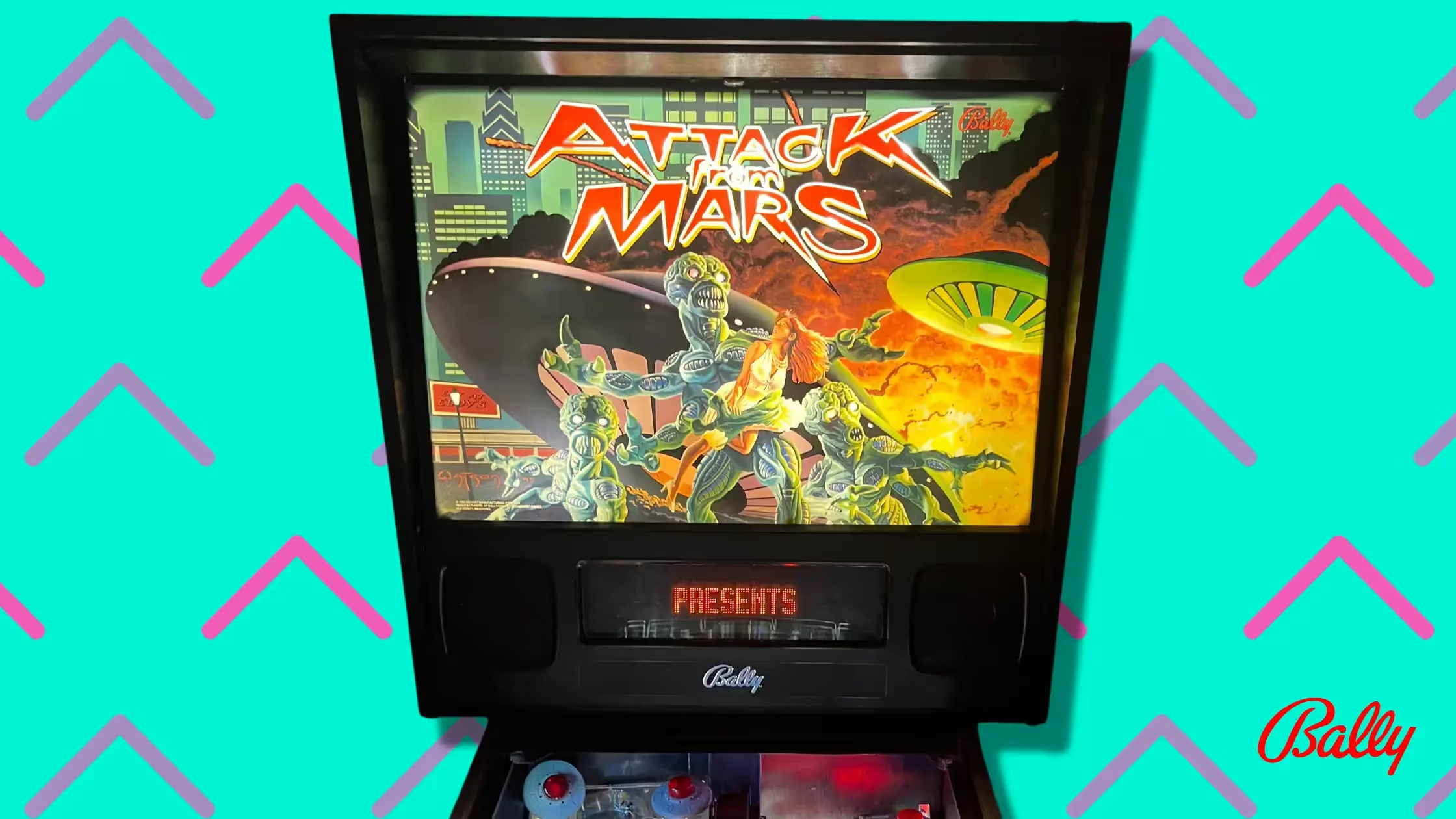
Attack from Mars is art. This cheeky alien-themed machine pulls obvious inspiration from classic sci-fi films, but forges an identity all its own. Thanks to its simple fan layout, which features a begging-to-be-bashed spaceship in the center, it's the type of game that anyone can flip at and have fun with. Yet, the available nuance in strategy and a dangling carrot of progression makes it infinitely replayable and very hard to master. A favorite of almost everyone who plays, Attack from Mars is a stunning example of what makes pinball so special.
At the plunge, you're thrust into an alien invasion headfirst, tasked with performing a handful of objectives in order to reach the final wizard mode. These objectives, like hitting a 5-way combo or starting Total Annihilation, are easy in concept but require solid play. Most of the time, it's fun enough to blast up the center, destroying spaceships as you travel around the world, freeing various countries from their extraterrestrial stranglehold. For as fun as Attack from Mars is casually, it's just as exciting in competition, with multiple avenues to blow up the game's score if played properly.
With its memorable sound package, timeless art, cool toys, addictive rules, and accessible layout, Attack from Mars has it all. Callouts like “Italia! Italia!”, “Multiball!!”, and “not our hot dogs!” live rent-free in my head forever. Whether you're equally smitten with this Bally classic or think it's slightly overrated, there's no debating just how influential it was. A peak example of '90s pinball excellence and widely beloved as such, Attack from Mars definitely earns its spot at the top of this list.




































![How to Start an Arcade Business: Lessons from the Ghost Quarter in Greenfield, Iowa [Part 1]](https://cdn.prod.website-files.com/630f7e3a17d08a21ae05d20a/646e2ab34115ade1b5628d1c_How%20to%20Start%20an%20Arcade%20Business%20Lessons%20from%20the%20Ghost%20Quarter%20in%20Greenfield%2C%20Iowa%20%5BPart%201%5D.avif)
